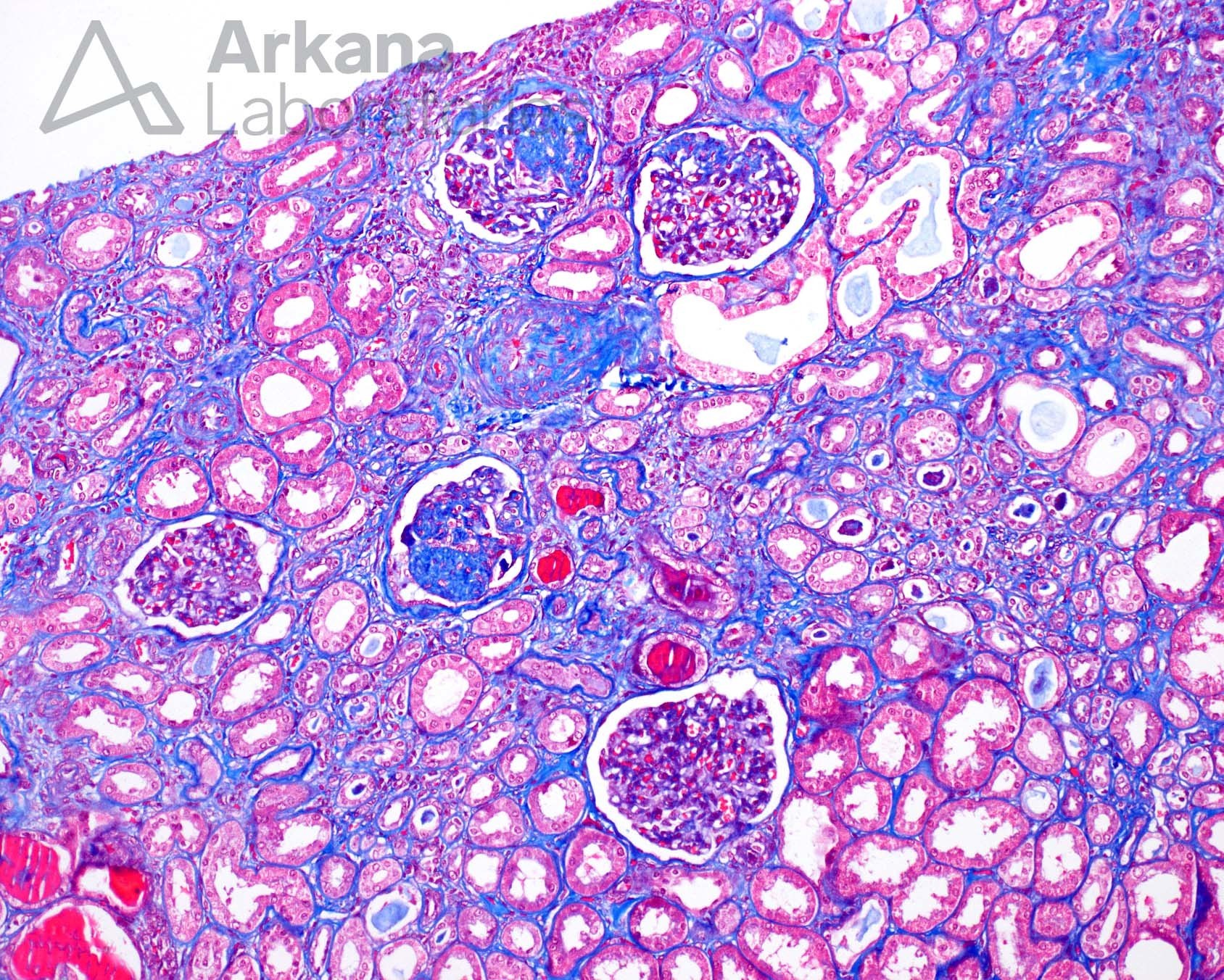In a patient with subnephrotic proteinuria, negative immunofluorescence, and segmental foot process effacement, what is your diagnosis?
Answer: Focal and Segmental Glomerulosclerosis, Favor Secondary
The biopsy shows sclerosis involving a portion of the glomerular tuft (segmental) of some, but not all, glomeruli (focal). These findings are consistent with focal and segmental glomerulosclerosis, a morphological lesion that reflects not a single disease entity, but can result from multiple etiologies (genetic, viral, drug-induced, hyperfiltration-related, among others). The presence of nephrotic syndrome and diffuse foot process effacement favors a primary FSGS, while the absence of the later favors secondary FSGS.
References:
KDIGO 2021 Clinical Practice Guideline For The Management of Glomerular Diseases
Quick note: This post is to be used for informational purposes only and does not constitute medical or health advice. Each person should consult their own doctor with respect to matters referenced. Arkana Laboratories assumes no liability for actions taken in reliance upon the information contained herein.

